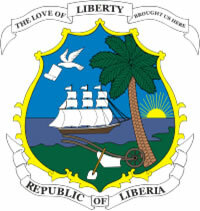In its recent history, Somali territory was one of several regions subordinated to the command and exploitation of the imperialist order. In this case, the northern portion of the territory was under the command of England and the eastern region dominated by the Italians. In the 1960s, under the context of decolonization, the two spaces gained their autonomy and were unified to form a single independent state.
Throughout its first decade of independence, Somalia was led by a democratically oriented government. That was until 1969, when the Armed Forces General, Mohamed Siad Barre, staged a coup d'état that made him the country's top leader for the next twenty years. In 1991, the general was eventually removed from his dictatorial post by the military force imposed by the armed political groups that formed during that time.
Known as “warlords”, these groups are divided into three main factions: the Somali National Movement (SNM), the Somali Patriotic Movement (SPM) and the United Somali Congress (USC). With each of the "warlords" claiming power for themselves, the Somali political landscape has plunged into a deep crisis in which no central or conciliatory authority was able to achieve stability national.
Not only that, in May 1991, the northern clans unified and declared their independence with the formation of the Republic of Somaliland. Even without international recognition, this region ended up establishing its autonomy with a form of government of its own. Amidst the political crisis, the serious situation of hunger and misery impelled the UN to intervene in Somalia, offering supplies for the less favored population.
In a short time, the resources taken by the UN instigated an incitement among the militias that controlled the country's various access routes. Thus, the United Nations authorized the arrival of US troops who could use force to ensure humanitarian work and seek a solution to that delicate situation politics. However, in 1994, this crisis ended up intensifying with the permanent action of the militias and the withdrawal of the US army from the region.
In 2000, the political crisis and constant internal conflicts were discussed at a meeting in Djibouti, where 200 Somali delegates gathered. The event ended up establishing the creation of a National Assembly and transferred the government to President Abdulkassim Salad Hasan. In October, the new government was formed. Shortly thereafter, some dissident armed groups did not recognize the new authority and thus preserved the exhausting state of war.
In 2004, a new meeting tried to resume dialogue between clans and armed groups to form a parliament capable of reorganizing the Somali nation. From then on, the influence and predominance of the Muslim religion ended up establishing the adoption of Islamic laws for the entire territory. However, the reach of peace was again threatened when the country's armed Islamic groups decided to declare war on Ethiopia, a neighboring country supported by the United States.
The invasion of Ethiopian troops ended up deepening the chaos, misery and hunger that dragged on among the Somali population. Only in 2008, a ceasefire agreement managed to bring about peace between the two countries. In January 2009, Ethiopia's complete withdrawal from the country was followed by the organization of a new parliament now taken over by moderate Islamic opposition. Even today, the new government faces the action of radically oriented Islamic militias, such as that of the Al Shabab group.
By Rainer Sousa
Master in History
Brazil School Team
20th century - wars - Brazil School
Source: Brazil School - https://brasilescola.uol.com.br/guerras/guerra-civil-na-somalia.htm


